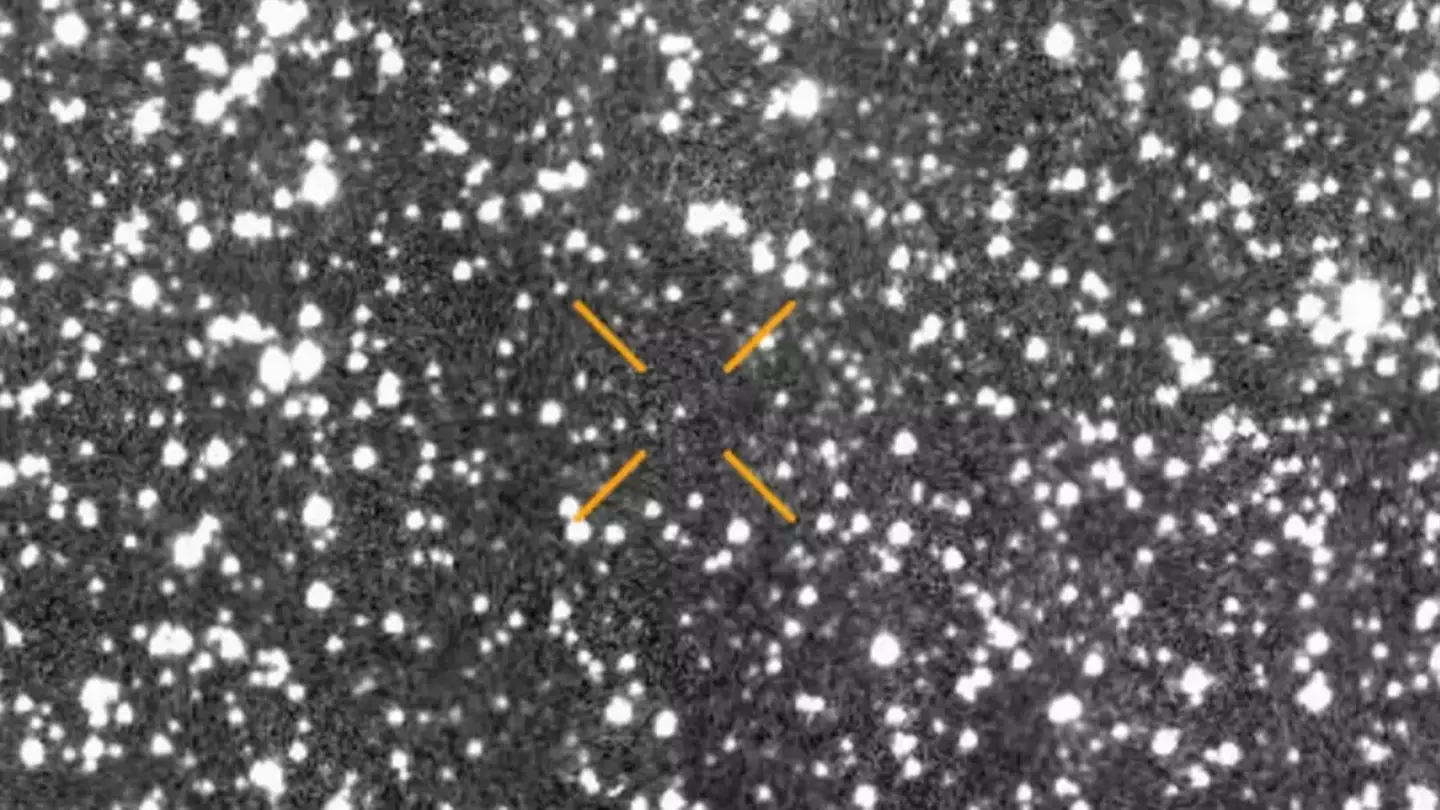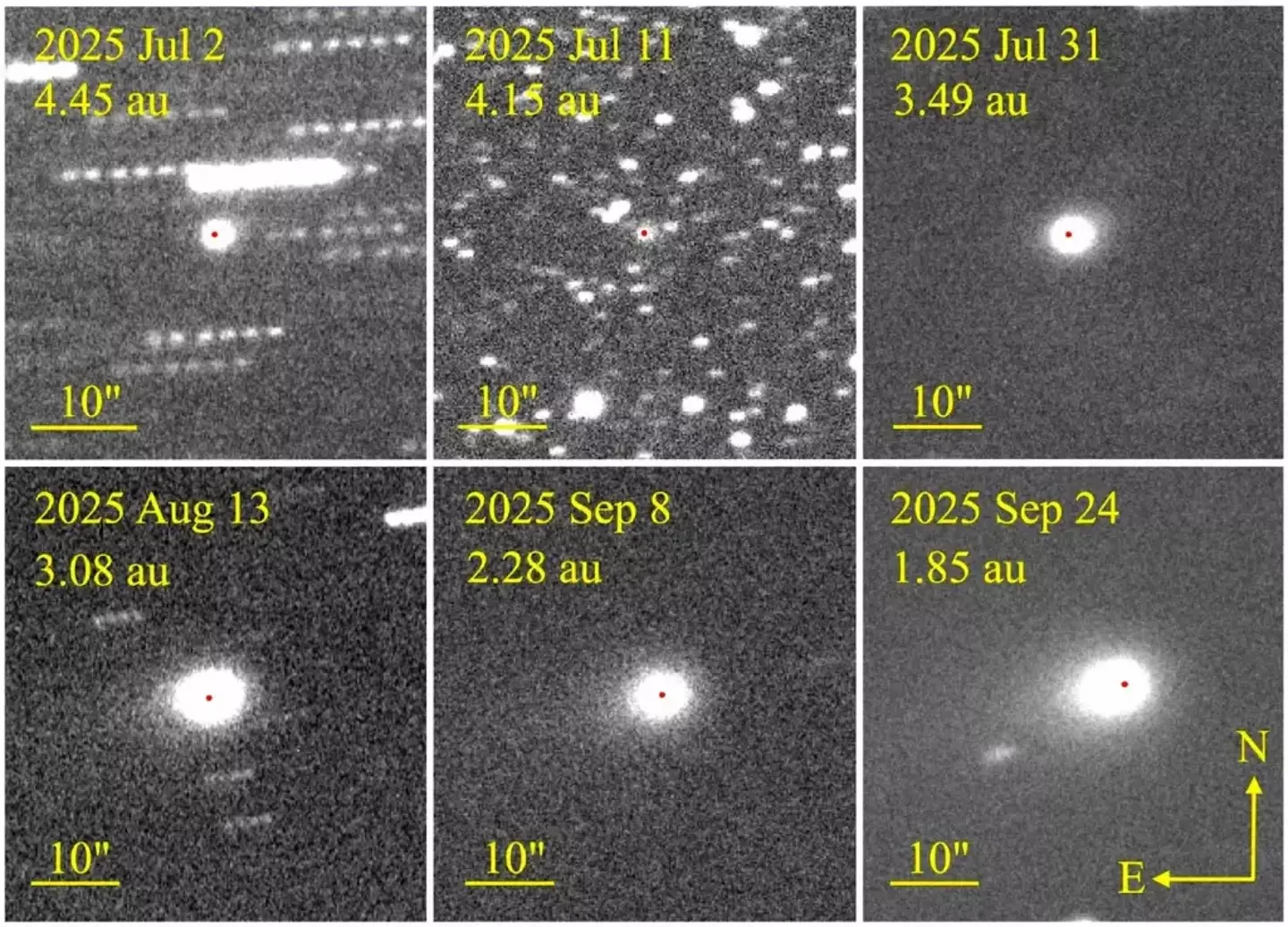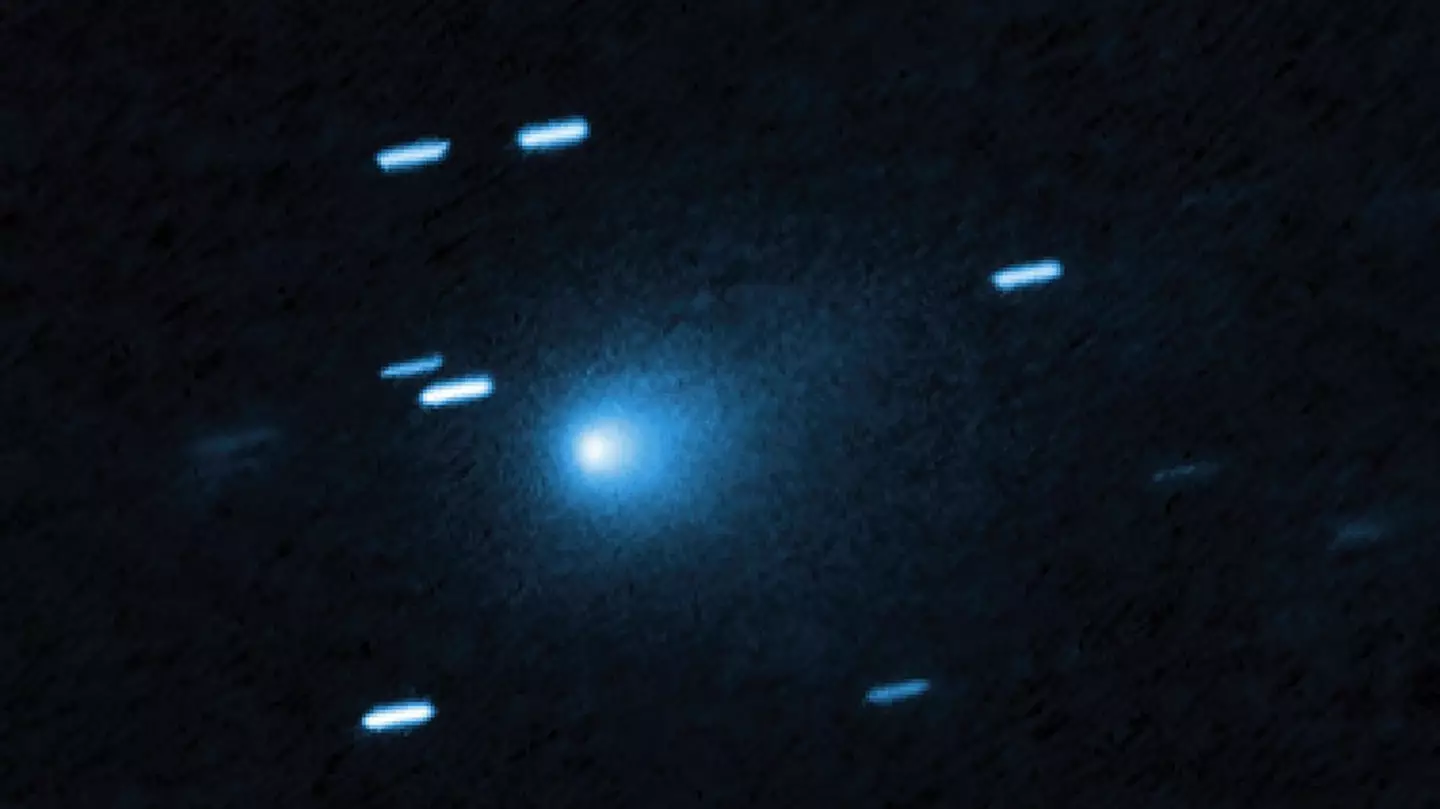There is a new development regarding the large celestial object moving towards Earth, as researchers work to identify its nature.
The space rock, comparable in size to Manhattan, was first spotted on July 1, and its unusual behavior has intrigued observers.
NASA has named this object 3I/ATLAS, and it has been displaying unexpected characteristics since its discovery.
While many believe it to be a comet, some scientists observing its trajectory have noted behaviors that deviate from typical comet activity.
Specifically, one researcher has suggested that it might even be an ‘alien mothership’, citing features that appear ‘not natural’, such as the emission of a metal compound previously unseen in nature and the peculiar path of its particles.
In a recent article on 3I/ATLAS, Harvard physicist Avi Loeb points out that the object lacks a key feature common to all comets.

“There were claims of a tail,” Loeb stated, mentioning: “But since 3I/ATLAS is accelerating and its current size is not much larger than the angular resolution of Earth-based telescopes, it is not easy to avoid fictitious elongation of the image as a result of the object’s motion.”
Despite much of his theories being based on the absence of a tail, referred to as an ‘anti-tail’ since it directed particles towards the sun rather than away, it seems 3I/ATLAS has now developed one.
Recent images captured by Spain’s Nordic Optical Telescope in the Canary Islands show the object with a tail. This tail consists of carbon dioxide and water, alongside cyanide and a nickel alloy, a composition typically observed in human-made engineering.
According to Loeb, the newly formed tail might have been generated to decelerate the object, suggesting it as evidence of a ‘braking thrust’ maneuver.
In his Medium blog, he shared: “I suggested a `Loeb Scale’ for interstellar objects where `0’ is definitely a natural object (comet or asteroid) and `10’ is definitely a technological object (identified by maneuvers or emission of artificial light or signals).

“Currently, I give 3I/ATLAS a 6 on that scale, but my assessment will change as we get better data on it when it comes closer to the Sun.”
Loeb now believes this could suggest ‘controlled maneuvering’ and indicates a possible high-impact ‘Black Swan’ event through an ‘Oberth maneuver’, which involves utilizing the sun’s gravity to change its trajectory.
In a previous Q&A, he mentioned that ‘from an engineer’s perspective’ a ‘mothership that releases mini-probes’ might execute this maneuver to ‘slow down at perihelion and intercept Earth, exploiting the Sun’s gravitational assist’, although this would depend on the ‘mass of the mini-probe’.
“As of now, I assign a 30 to 40 percent likelihood that 3I/ATLAS does not have a fully natural origin.” Loeb noted on his blog.
“This low-probability scenario includes the possibility of a black swan event akin to a Trojan Horse, where a technological object masquerades as a natural comet.”
Regardless of the object’s true nature, the International Asteroid Warning Network has included 3I/ATLAS on its monitoring list, noting on their site that while it ‘poses no threat’, it offers a ‘great opportunity’ for study ‘due to its prolonged visibility from Earth and its significant interest to the scientific community’.

